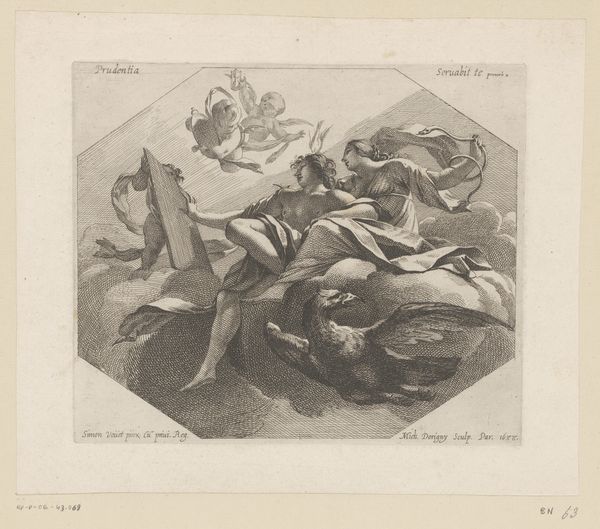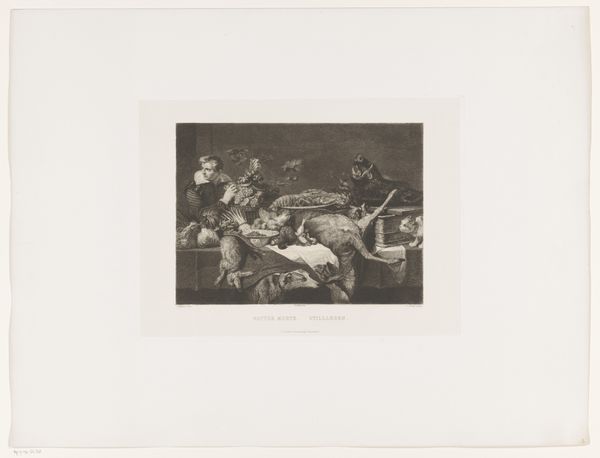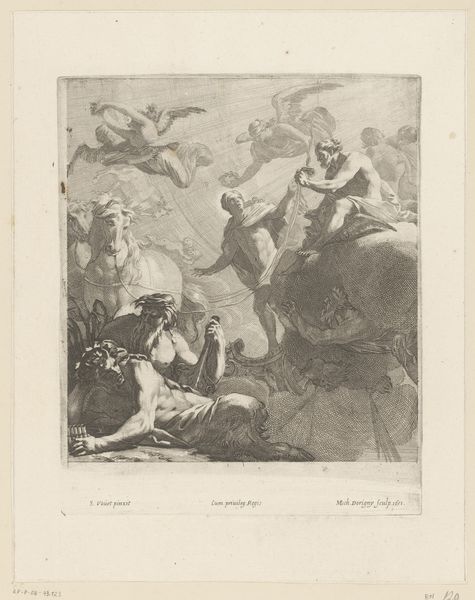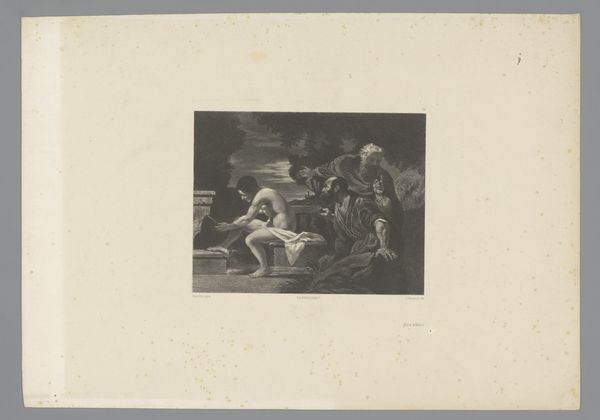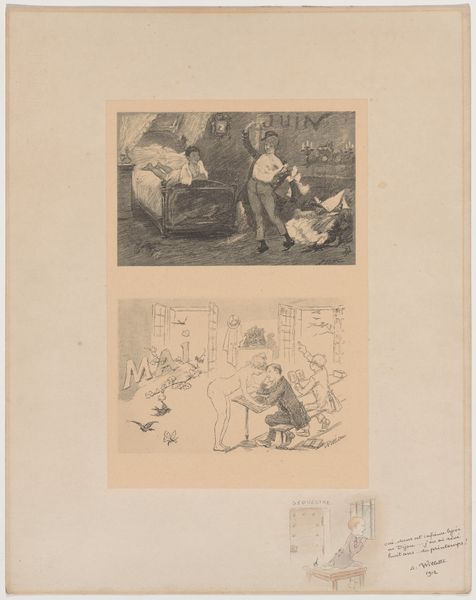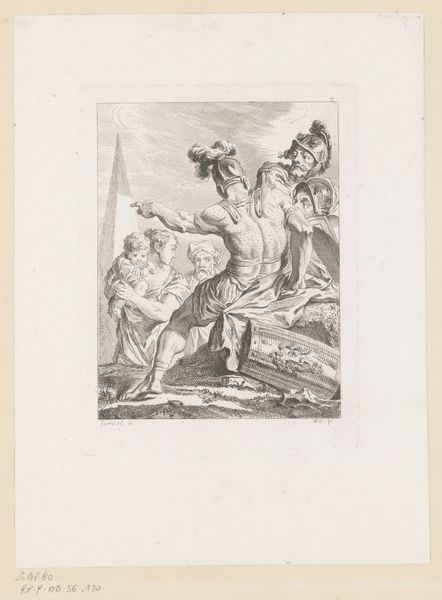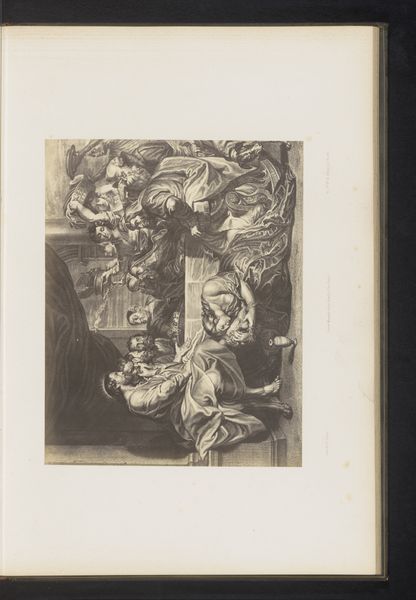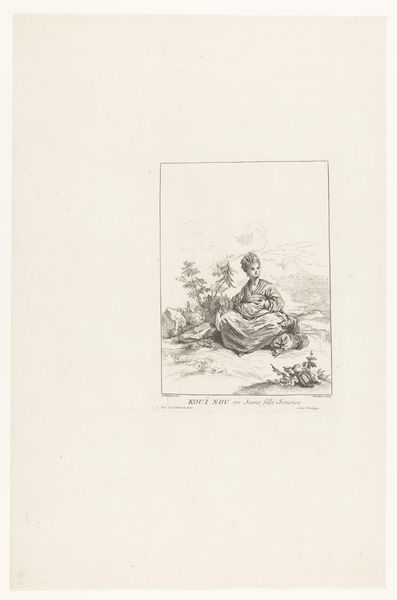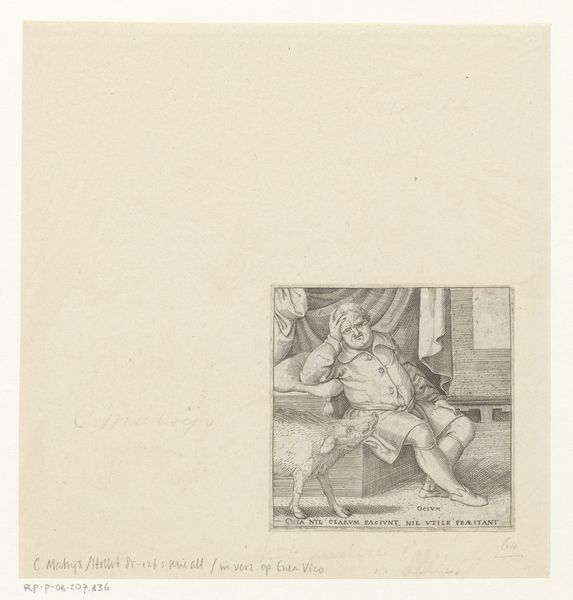
print, engraving
#
allegory
#
baroque
# print
#
old engraving style
#
traditional media
#
landscape
#
figuration
#
line
#
history-painting
#
engraving
Dimensions: height 190 mm, width 228 mm
Copyright: Rijks Museum: Open Domain
Curator: This intriguing 1638 engraving by Michel Dorigny is entitled "Matigheid met eenhoorn op een wolk," or "Temperance with unicorn on a cloud." What strikes you about it at first glance? Editor: It's such an ethereal scene, almost dreamlike, isn’t it? The wispy clouds, the delicate line work… it gives an overwhelming sense of lightness and grace, even with so much going on within its structured border. Curator: Absolutely. The baroque style lends itself to dynamic composition, here further emphasized by the interplay of light and shadow, creating depth. And, notably, it presents us with a complex allegory, rendered through figuration. Editor: You're right. It's interesting to consider the broader context in which Dorigny created this print. Allegorical representations were a key part of both the artistic and political vocabulary. This particular allegory reflects a time that appreciated allegories of virtues as moral exemplars. How was temperance being envisioned here in society? Curator: The unicorn itself becomes a symbol, drawn directly from medieval bestiaries and courtly love traditions. In the language of the form, its presence invites contemplation on purity and control. Its integration within the cloudscape elevates this meaning into a transcendental framework. Editor: Beyond its moral message, I think what also captures my attention is how it likely was used. Prints like these had incredible social agency. They could reproduce the art and ideas of the time and spread it amongst different societal circles as decoration, educational tool, a personal reflection... Curator: A compelling idea—it adds yet another layer to our analysis of its impact. Editor: I have a question: How can something so fixed like a black line allow one to engage so deeply and openly in contemplation of values that shape both human understanding and behavior in society? That contrast makes me think more about art’s place then and now. Curator: A fitting reflection on our dialogue. Perhaps it suggests that even in starkness and discipline, there is an invitation to openness, mirroring how form itself can guide but not confine the very essence of meaning it aims to impart.
Comments
No comments
Be the first to comment and join the conversation on the ultimate creative platform.
